MAG VTI MALE CAMPUS
At MAG VTI Male, we are committed to nurturing young men through vocational training programs crafted to unlock their potential and pave the way for prosperous careers. Situated at the heart of our community, our institute offers a supportive and inclusive learning environment where students can flourish and evolve. Our mission is to arm our students with the skills and expertise necessary to thrive in today’s competitive job market. Through immersive hands-on training and expert mentorship, we equip our graduates to emerge as confident professionals poised to make a significant impact in their chosen fields. With an emphasis on practical learning, our institute provides specialized courses tailored to meet the demands of modern industries. Our offerings include programs in Welding, Industrial Electrician, and Motorcycle Mechanics, each meticulously designed to provide students with the tools they need to excel. Whether your ambitions lie in mastering the art of welding, becoming a skilled industrial electrician, or delving into the intricacies of motorcycle mechanics, MAG VTI Male is here to guide you on a journey of discovery, growth, and boundless opportunities. Join us as we embark on a quest to shape futures and empower paths towards success.
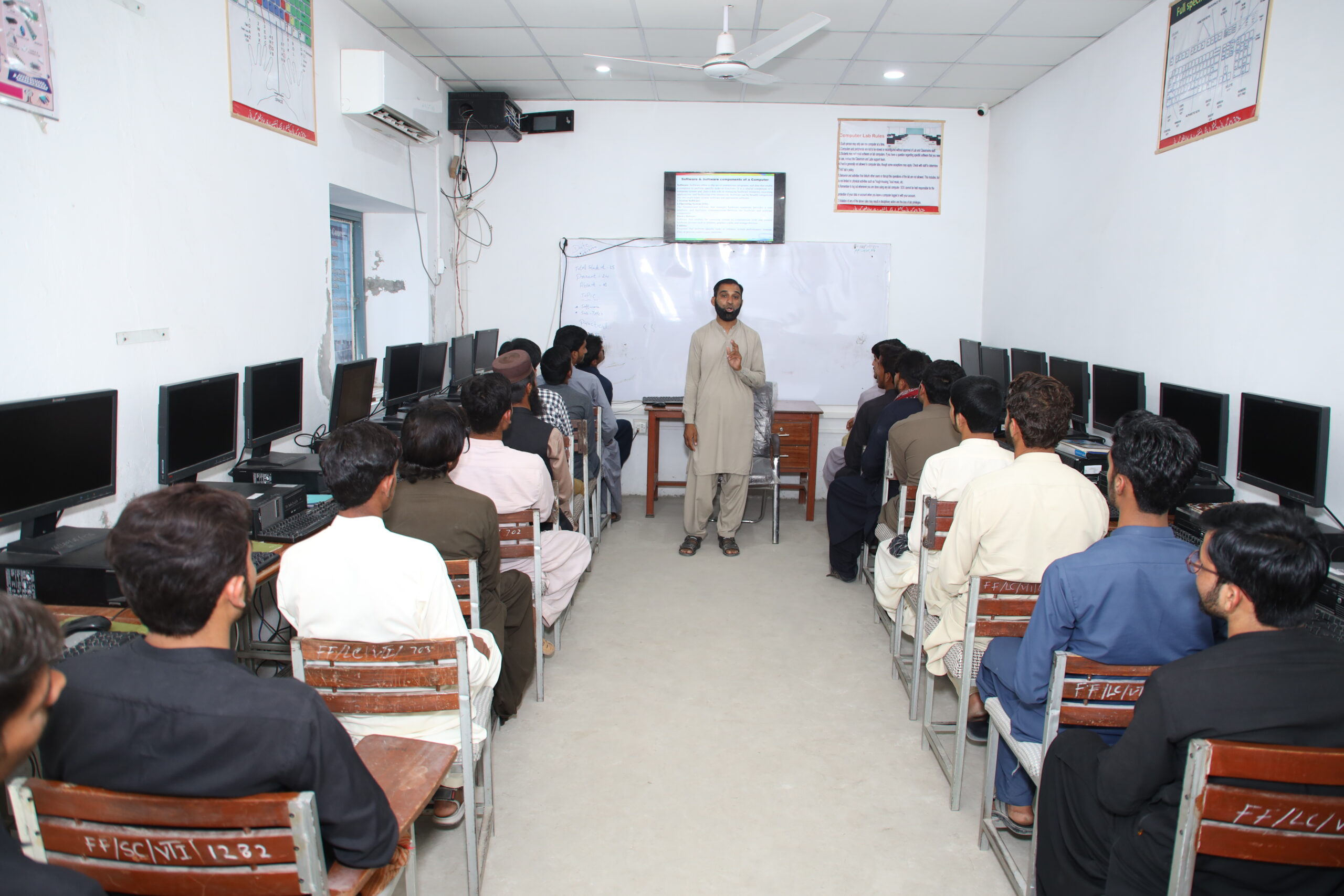
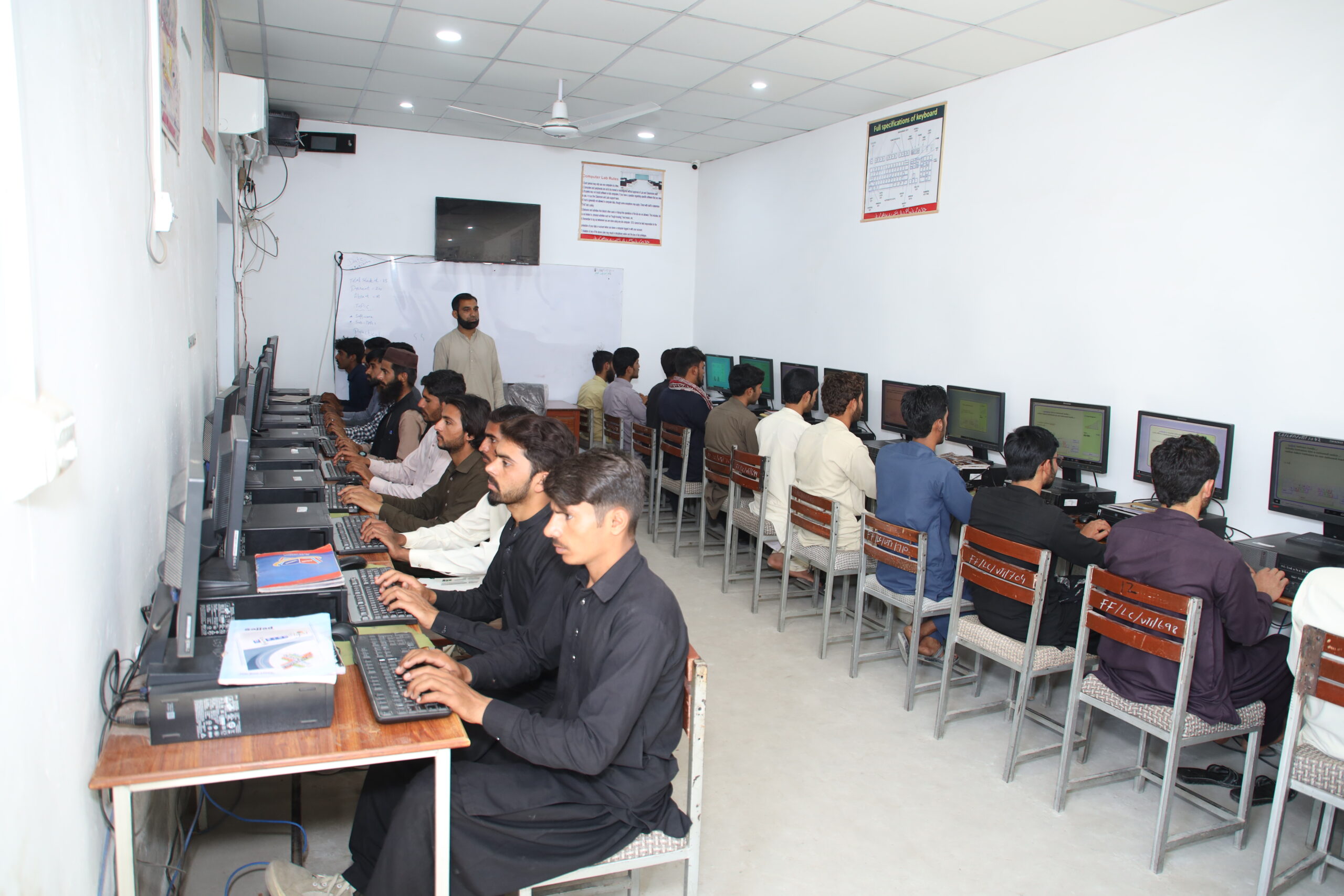
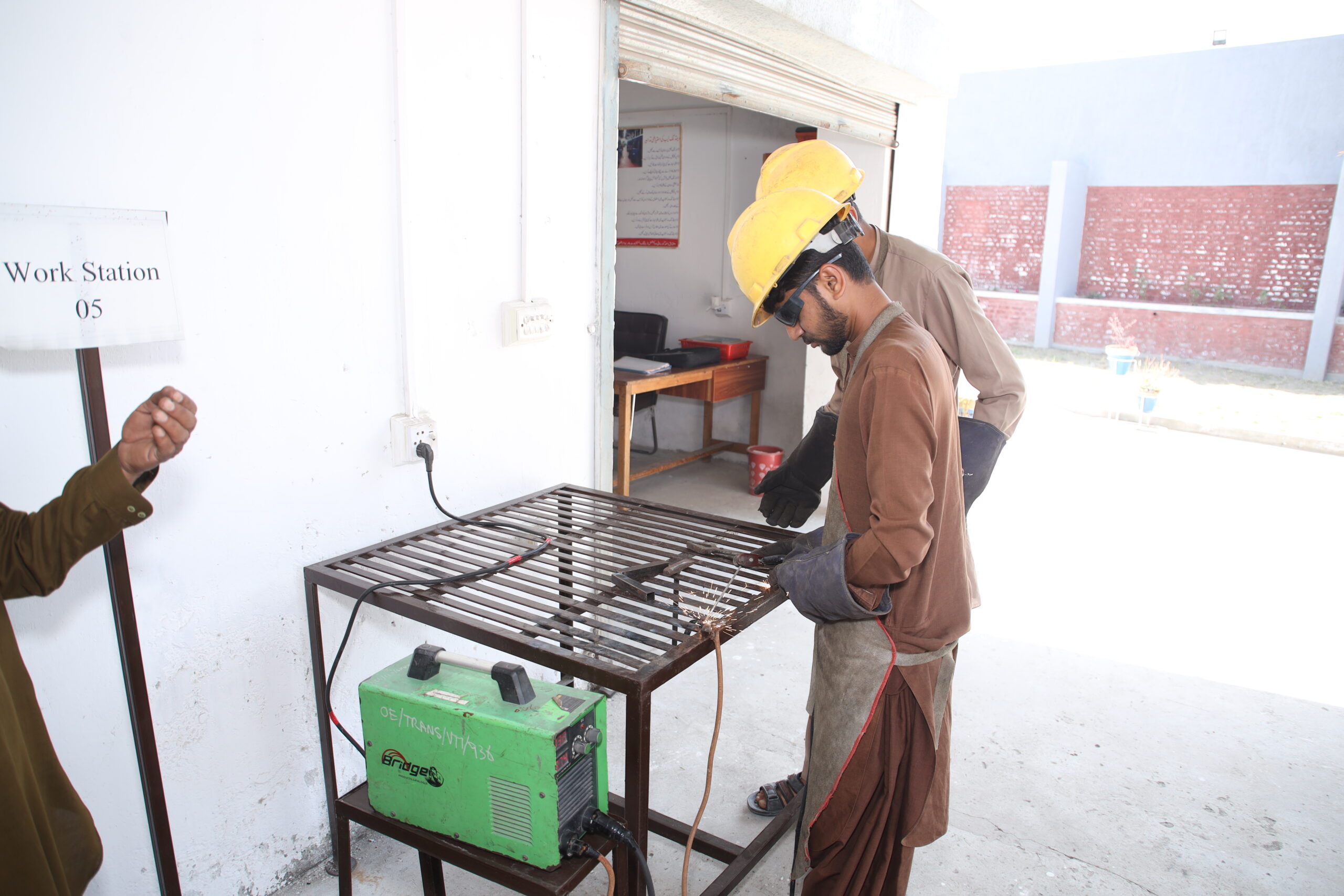
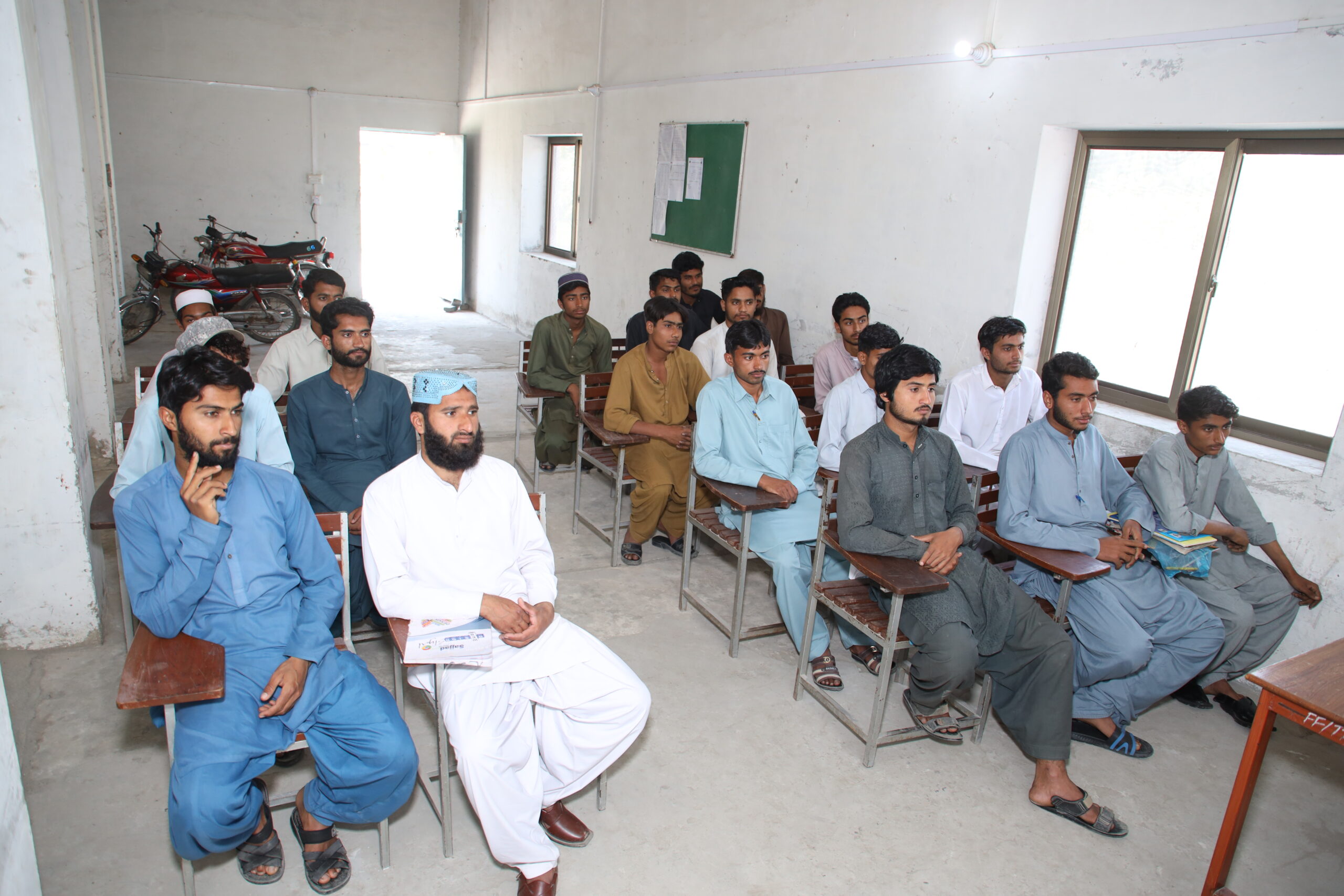
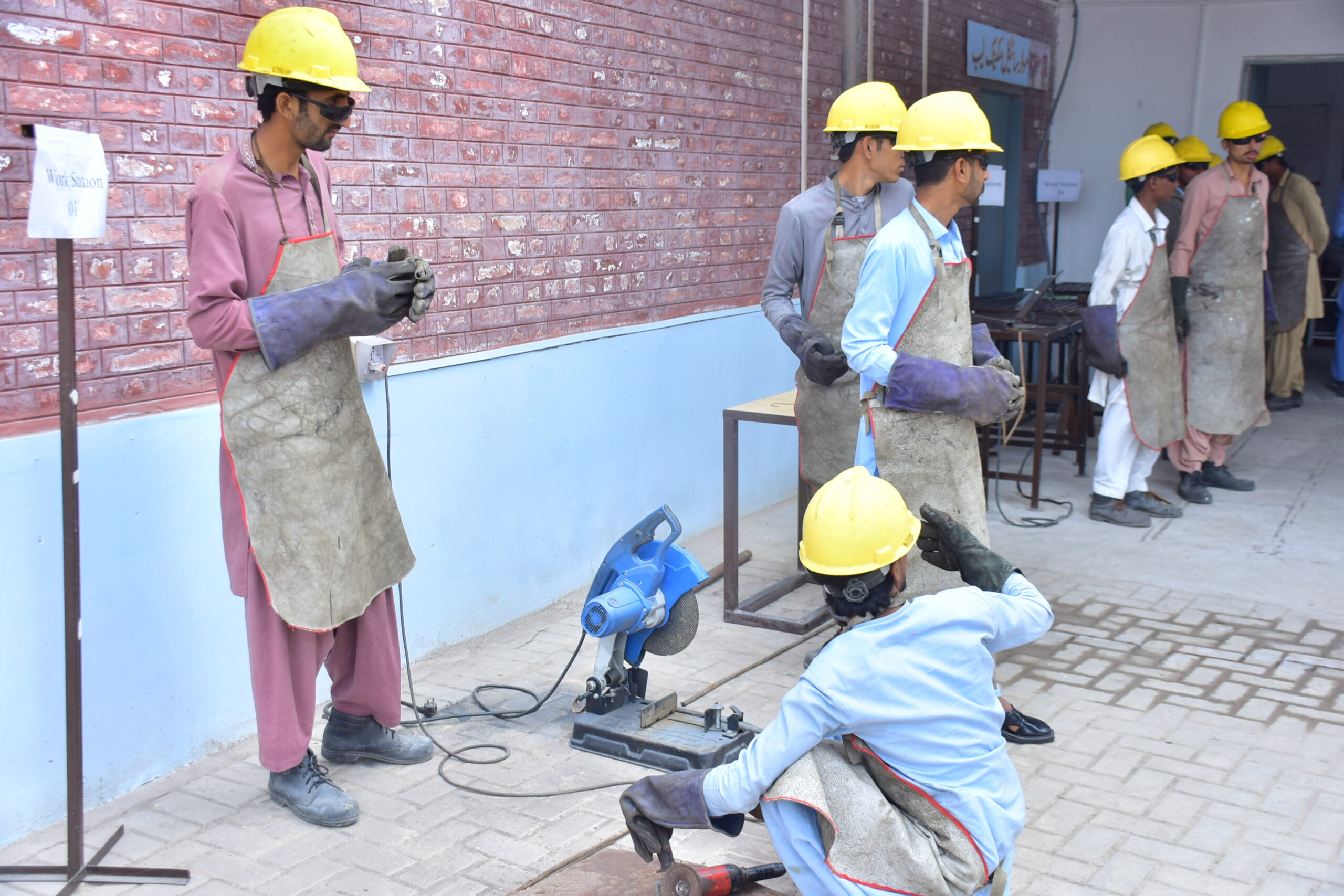
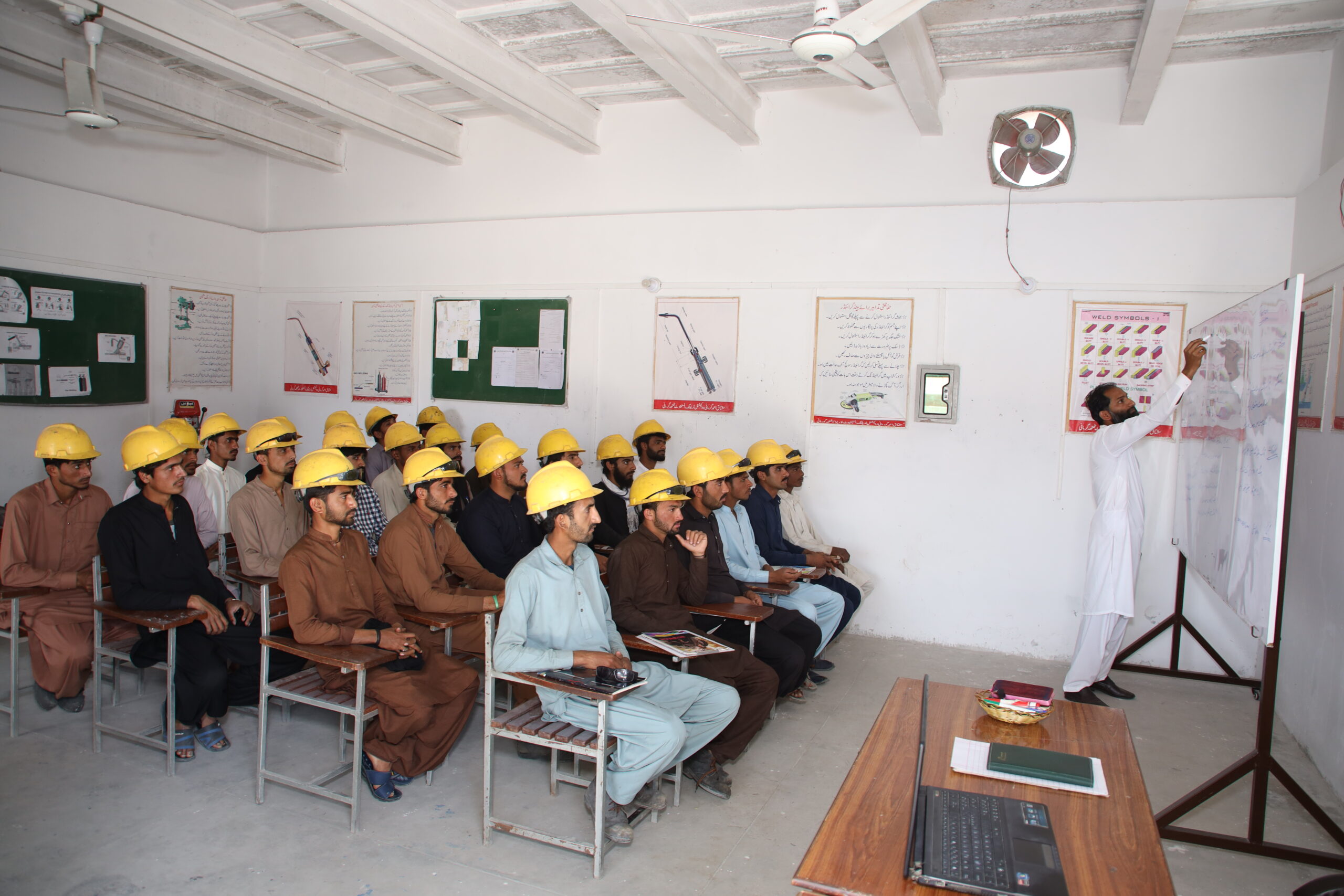
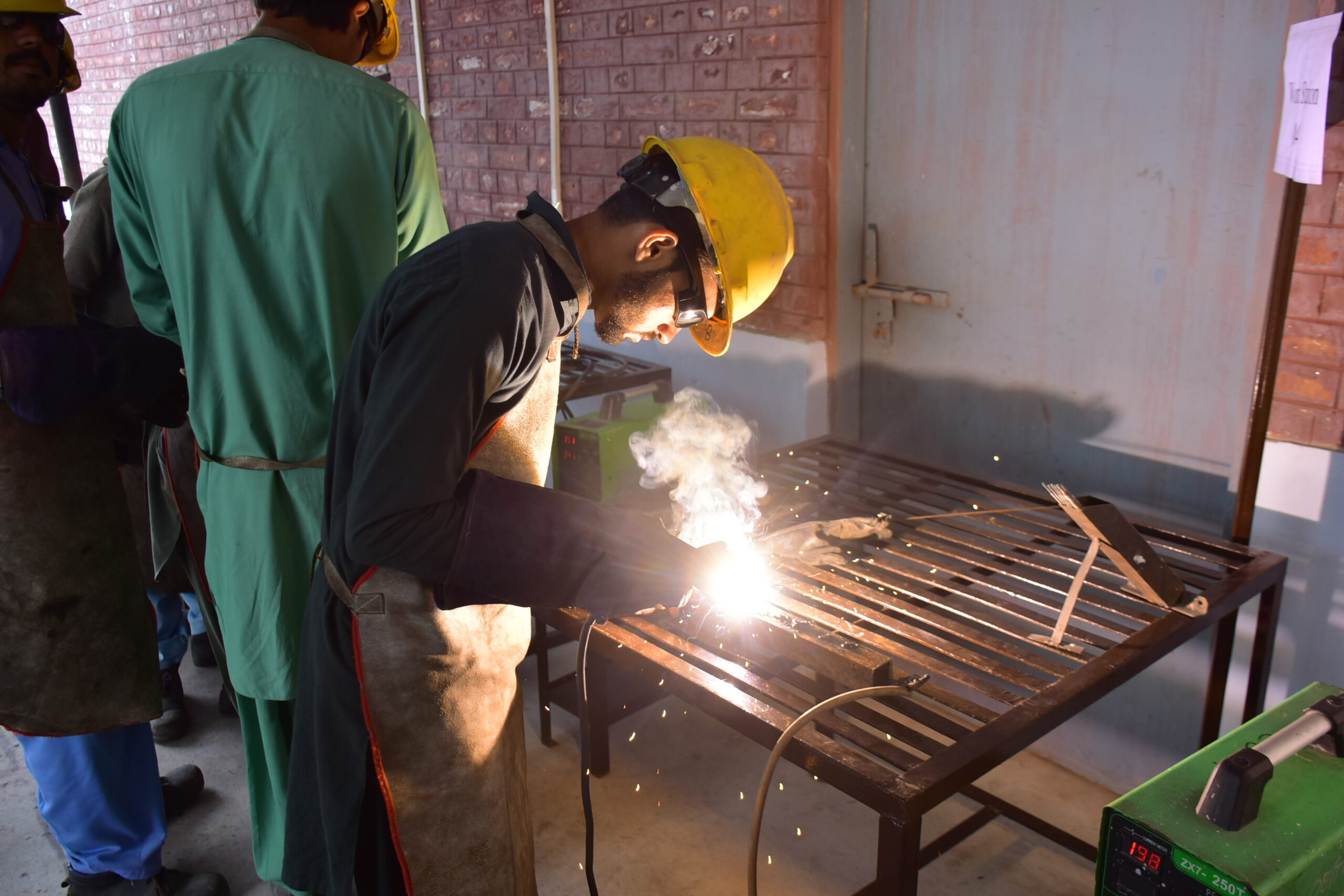
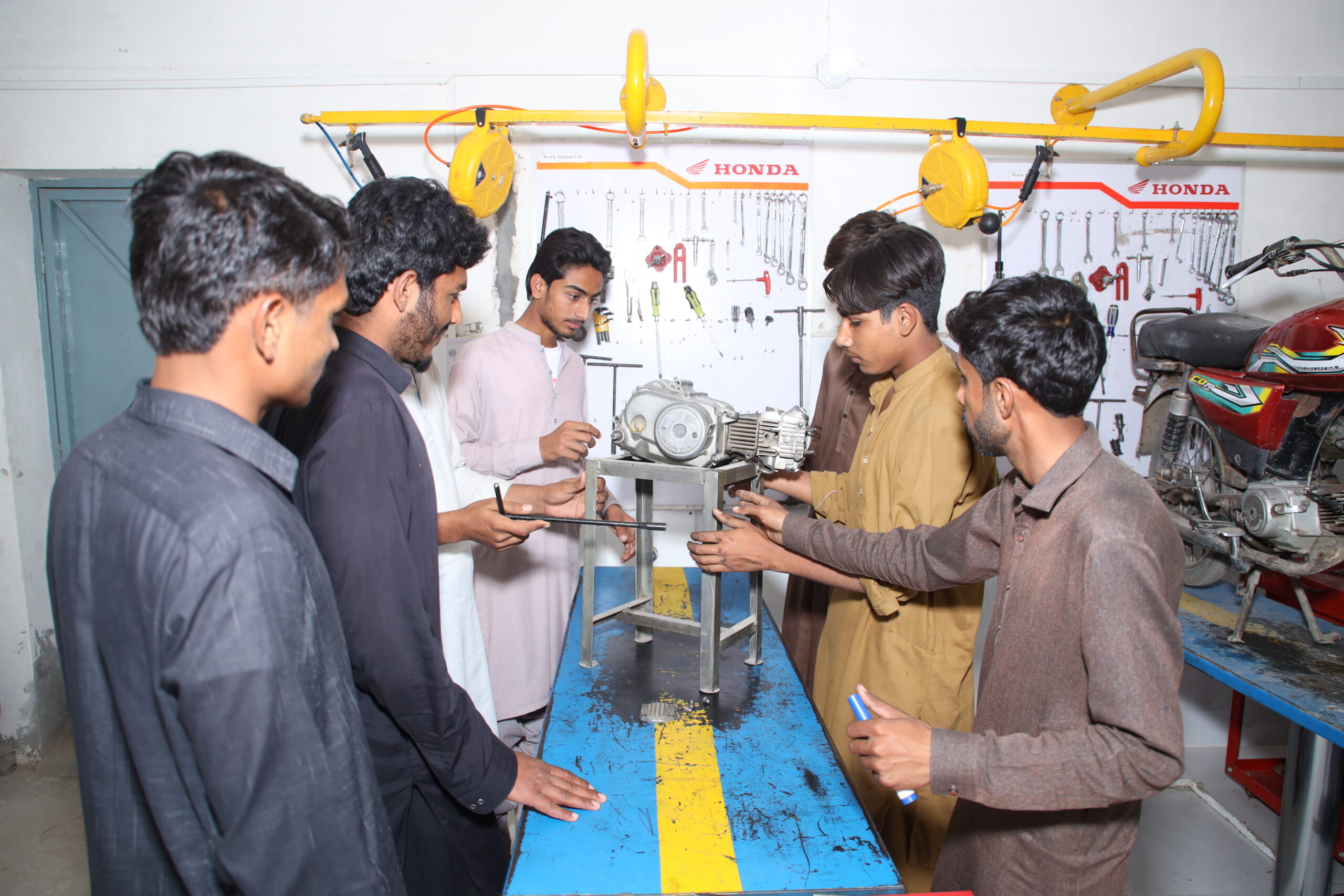

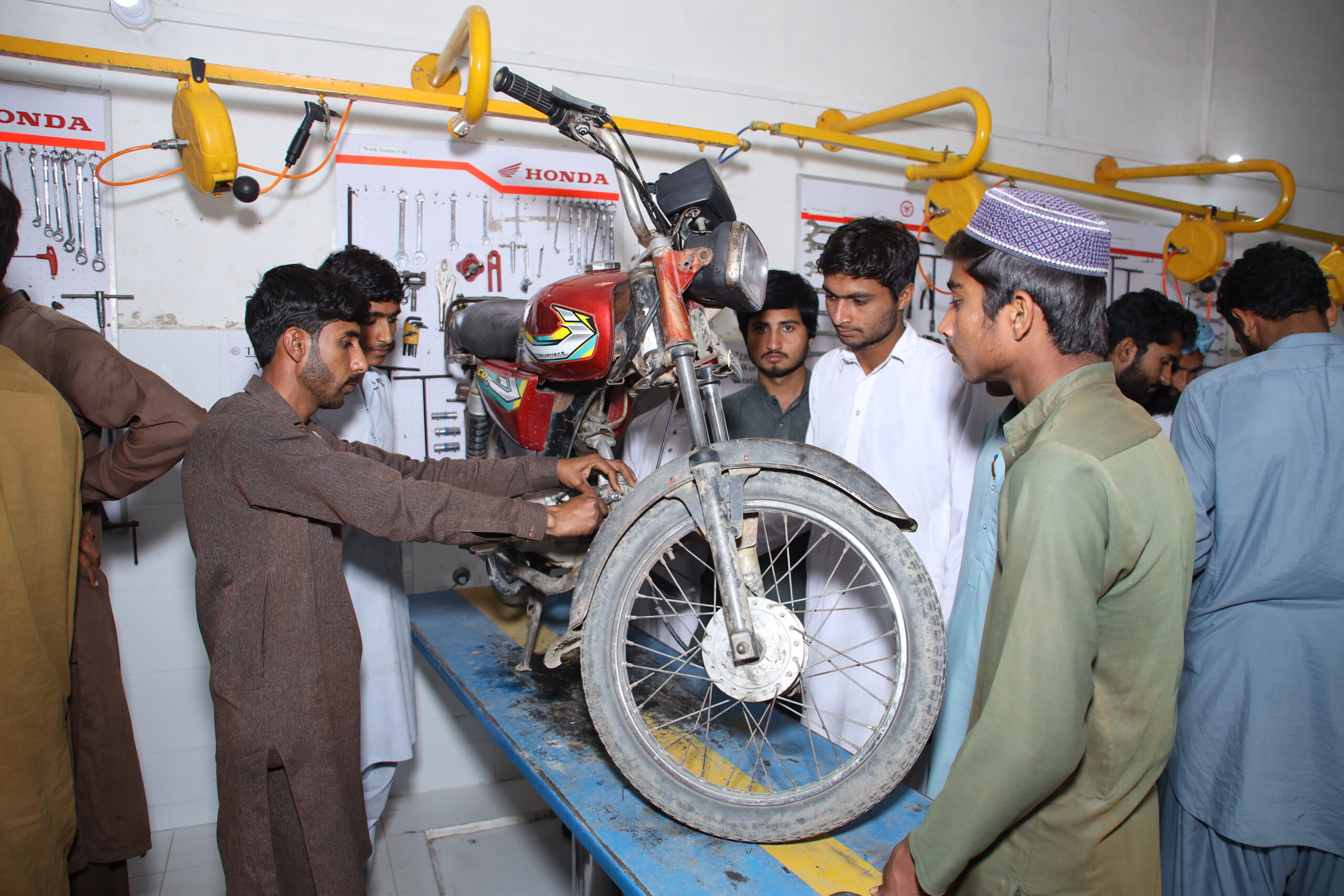
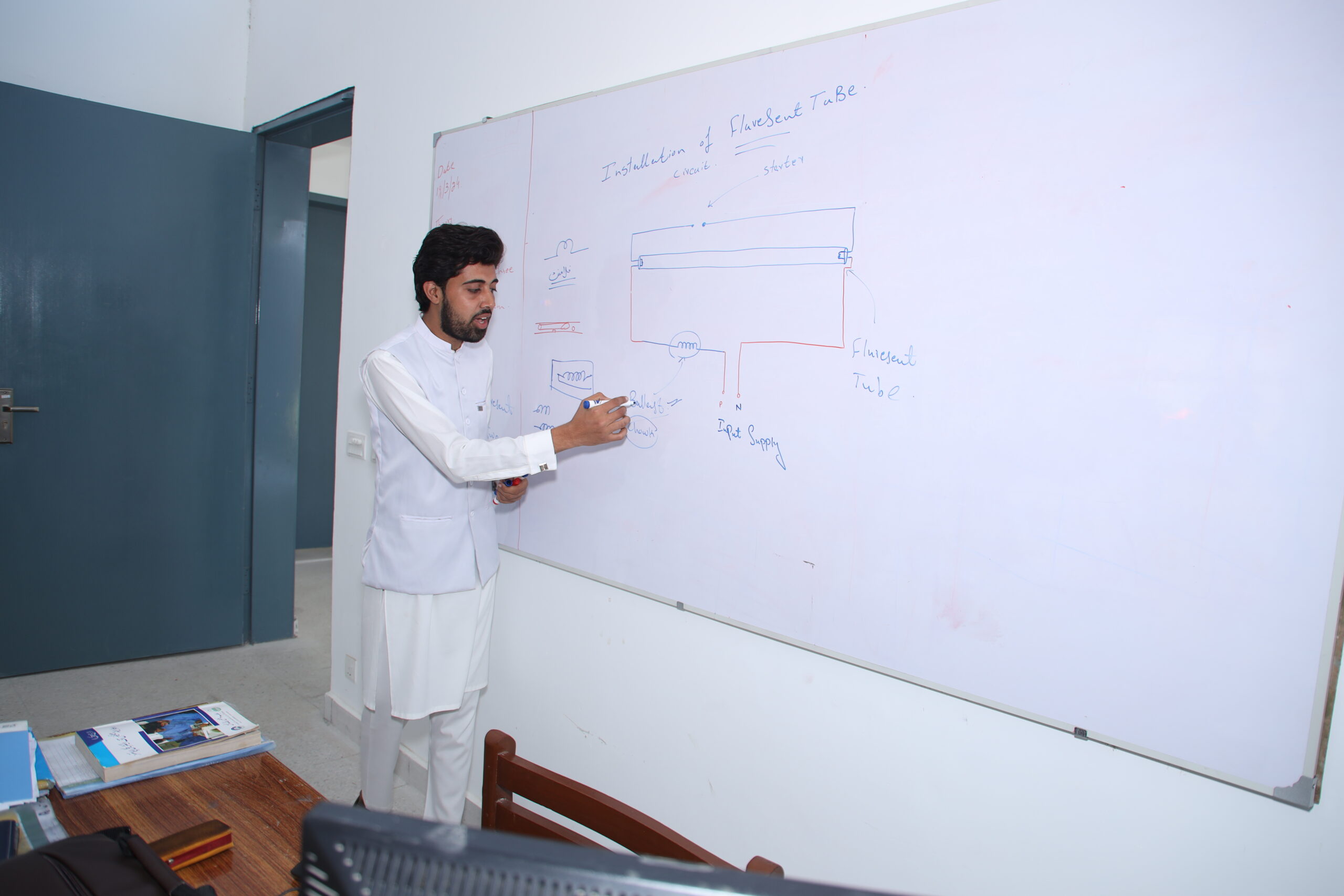
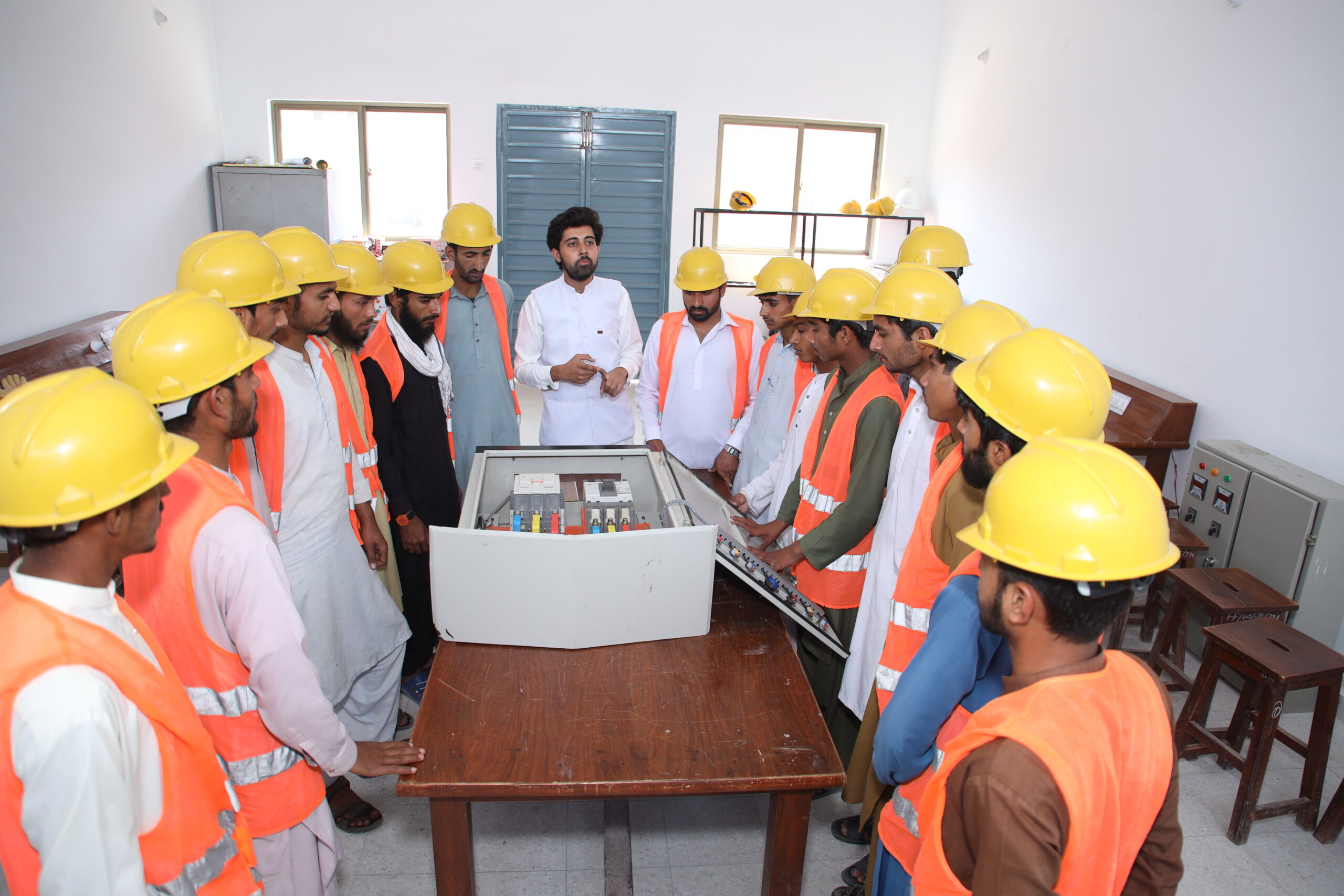
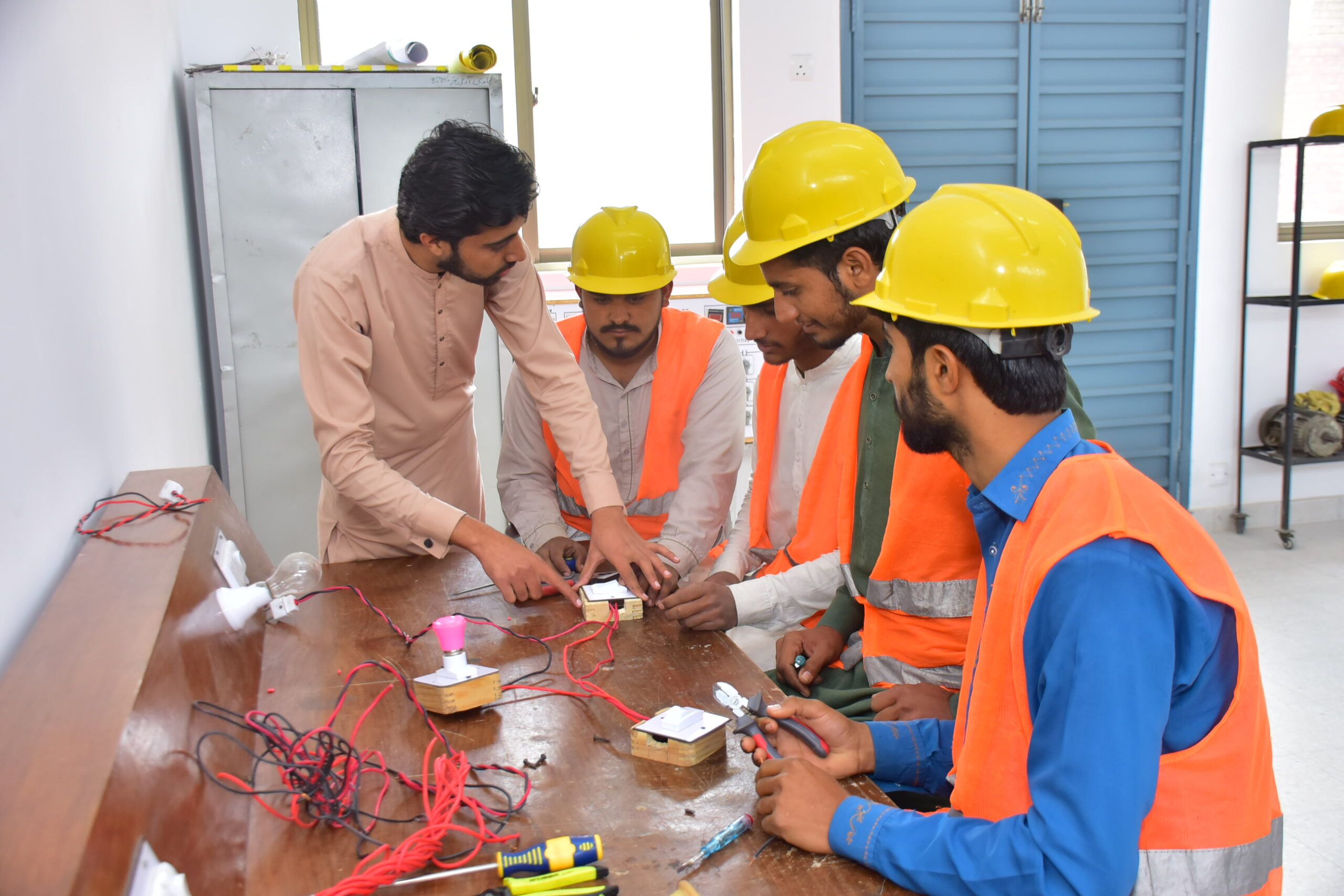
Offer TRADES
We've achieved an enviable reputation for research and teaching excellence.
This six-month curriculum is designed to address the local job market demands and industrial requirements by placing a strong emphasis on practical training, complemented by essential theoretical knowledge. Special attention is given to proficiency in common hand tools, handling of wires, electrical wiring techniques, repair of household electrical appliances, fault diagnosis and rectification, utilization of measuring instruments, and conducting lab experiments.
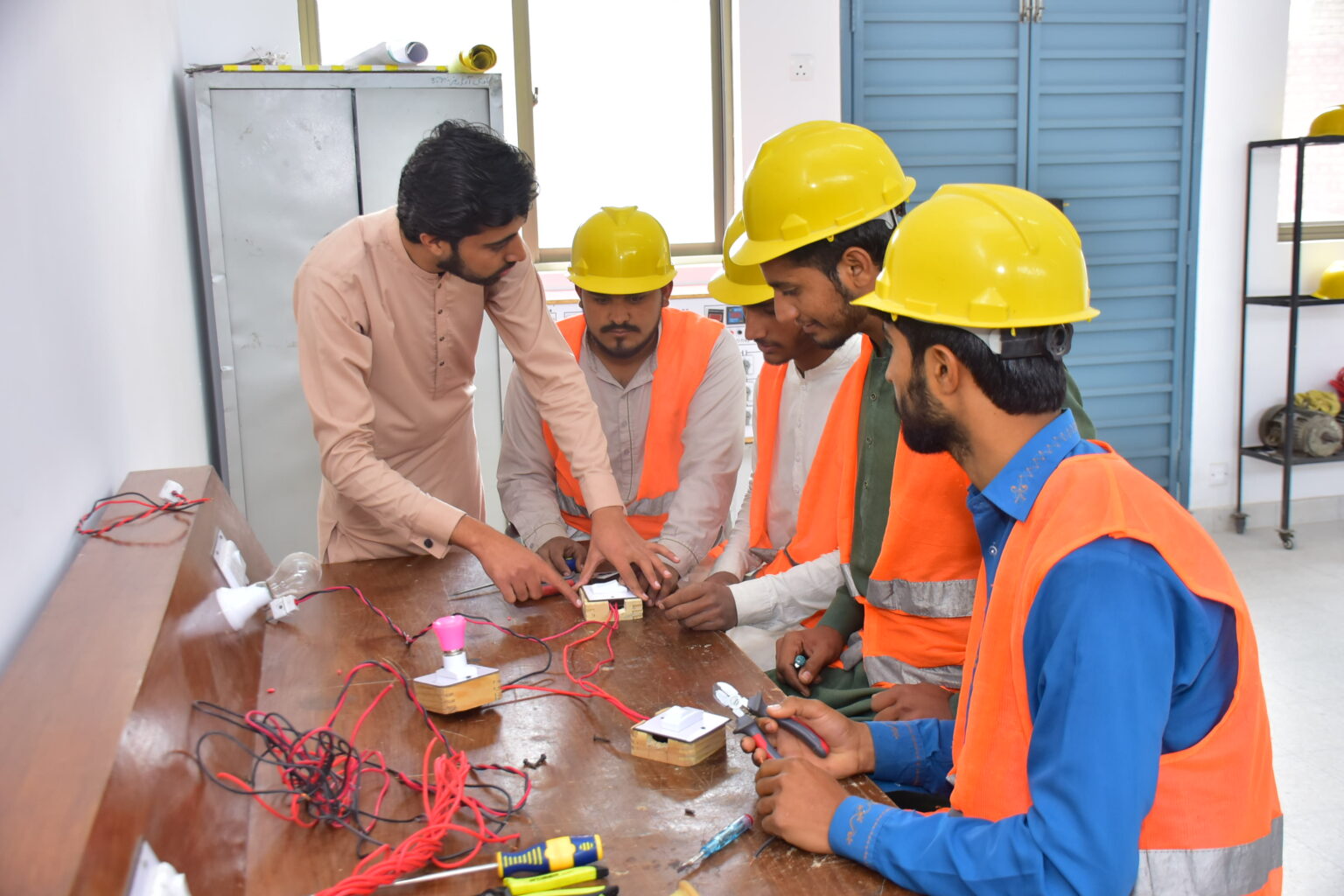

This curriculum is designed with a focus on meeting market demands by emphasizing practical skills alongside essential theoretical knowledge, aiming to produce semi-skilled workers capable of performing minor repairs on both 2 and 4-stroke motorcycles. The curriculum covers key topics such as safety precautions, workshop tools, engine introduction, special tools, comparison of two-stroke and four-stroke motorcycle engines, fuel systems, lubrication systems, cooling systems, starting systems, suspension systems, charging systems, tuning, overhaul, fault finding, and remedies, along with instruction in Functional English and Information Technology.
This curriculum is meticulously designed to meet the requirements of the construction industry, with a strong emphasis on practical training complemented by essential theoretical knowledge and adherence to work ethics. The curriculum encompasses key topics such as basic metalwork, usage of measuring tools, Shielded Metal Arc Welding (SMAW), Gas Tungsten Arc Welding (GTAW) or Tungsten Inert Gas (TIG) welding, Gas Metal Arc Welding (GMAW) or Metal Inert Gas (MIG) welding, gas welding/cutting, different welding positions for plate and pipe welding, and construction fabrication.
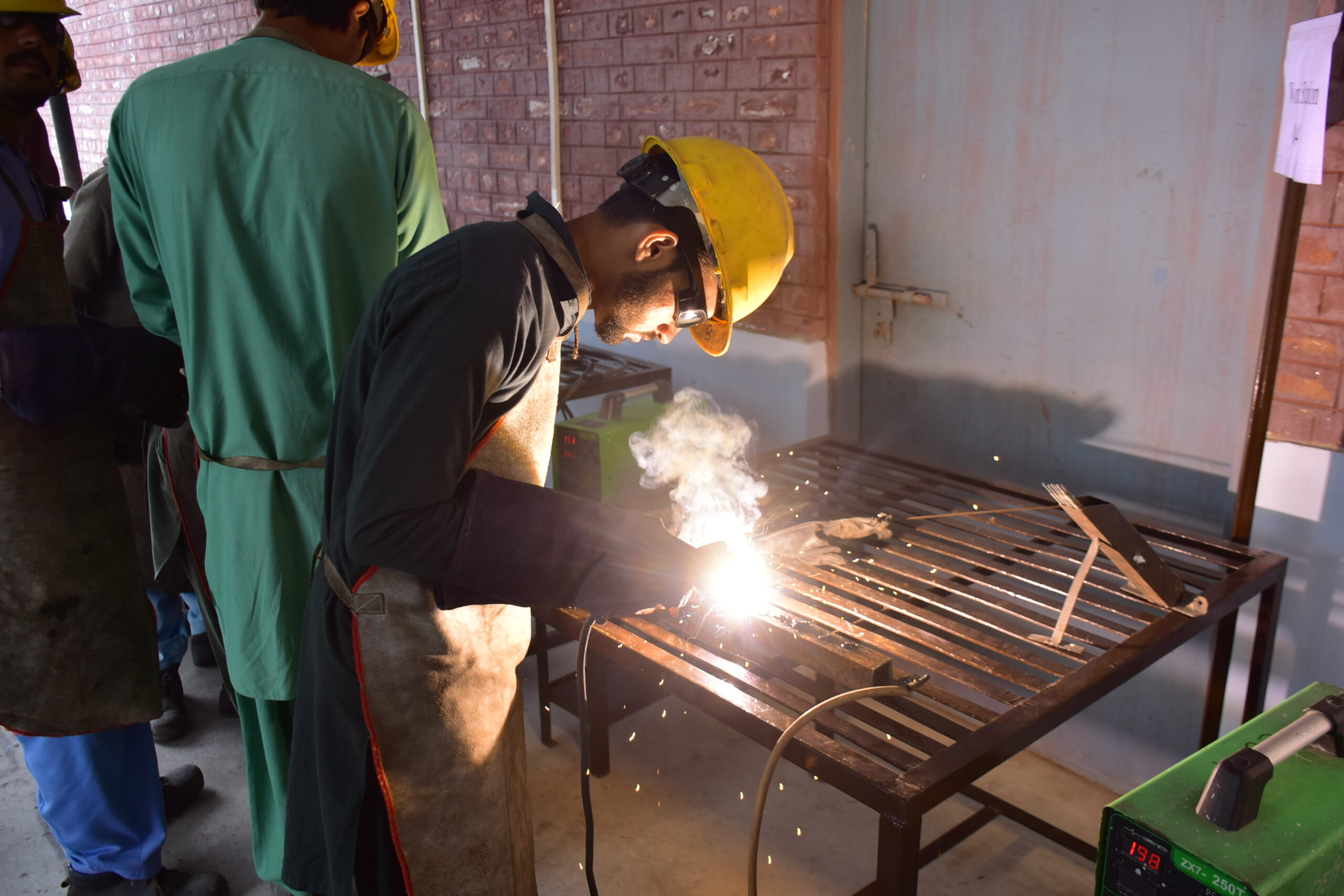

As the driving force behind our present reality, computers have revolutionized every industry, becoming the cornerstone of efficient operations. With this understanding, our curriculum is meticulously crafted to meet the demands of the modern job market, recognizing the indispensable role of practical skills coupled with essential theoretical knowledge. We place a strong emphasis on instilling work ethics to cultivate well-rounded professionals capable of navigating the complexities of today’s digital world.
Training Objective
We've achieved an enviable reputation for research and teaching excellence.
The rapid expansion of industrial development is driven by the production of high-quality goods to meet public demands. In this context, individuals with proper training and skills play a crucial role in modern life, especially given the advancements in technology. This six-month curriculum is designed to address the local job market demands and industrial requirements by placing a strong emphasis on practical training, complemented by essential theoretical knowledge. Special attention is given to proficiency in common hand tools, handling of wires, electrical wiring techniques, repair of household electrical appliances, fault diagnosis and rectification, utilization of measuring instruments, and conducting lab experiments. The aim is to cultivate a skilled and competent workforce capable of meeting both current and future job market demands. Additionally, the training includes modules in Functional English and Information Technology knowledge. Specifically for industrial electricians, the curriculum delves into advanced topics such as industrial wiring repair, maintenance of industrial electrical systems, and troubleshooting techniques specific to industrial settings.
Key Features of the Curriculum and Eligibility Criteria
Name of the course: Electrician
Entry Level: Middle, Preferable Matriculation
Age requirement: Between 15 and 38 years old, or 18 to 40 depending on the Certification Awarding Body (CAB). NAVTTC and PSDF accept candidates aged 18 to 40, while others accept those aged 15 to 40.
Duration of Course: 6 Months
Total training hours: 800 Contact Hours.
Training Methodology:
- Practical: 80%
- Theory: 20%
Course Outline:
Workshop Safety and Regulations
- Adherence to general workshop rules and regulations.
- Explanation of safety precautions, safety practices, and first-aid treatment for electric shock.
Tool Utilization and Applications
- Utilization of common hand tools for bench work and measuring purposes.
- Application of common hand tools specific to electricians.
Electrical Systems and Wiring
- Installation of various domestic and industrial wiring systems, including distribution boards for both single and three-phase four-wire supply systems.
- Implementation of surface wiring, channel wiring, and PVC pipe wiring in domestic installations, as well as concealed wiring and earthing techniques.
- Estimation of materials and tools required for domestic installations.
- Circuit Diagrams and Layouts: Creation of circuit diagrams in accordance with layout specifications and identification of their functions.
- Protective Devices: Selection and operation of different types of protective devices such as fuses, re-wire-able, HRC types, and circuit breakers.
Measuring Instruments and Interpretation
- Connection and interpretation of readings from volt, ampere, wattmeter, frequency meter, KWH meter, power factor meter, and utilization of tong testers.
- Description of the construction and working principles of simple measuring instruments such as voltmeters, ammeters, watt-meters, and KWH meters.
Electrical Theories and Principles
- Understanding electricity and its sources of generation.
- Description of current, voltage, resistance units, and their relationships including Ohm’s law, with practical applications in measuring resistance, current, and voltage drop in resistors using ohmmeters and meggers.
- Explanation of series, parallel, and complex circuit configurations of resistors.
- Understanding voltage drop in lines, wire size calculations, and referencing current tables.
- Definition of magnetism, electro-inductance, and capacitor construction, including chokes and capacitors and their working principles.
Motors and Appliances
- Installation and operation of single-phase and three-phase motors with drum switches/contactors and protection switches.
- Repair of household appliances including electric irons, fans, electric heaters, electric kettles, toasters, washing machines, and sandwich makers.
- Explanation of the working principles and construction of single-phase motors (fans), including capacitor and non-capacitor types, cookers, electric irons (simple and automatic), and their functions.
- Description of single-phase motors used in machines and methods for fault rectification.
- Description of the construction of three-phase motors and methods for fault rectification.
Power Generation and Distribution
- Transformers: Description of single-phase and three-phase generation and distribution systems.
- Definition of single-phase transformer construction, working principles, and components.
The motorcycle serves as a widely used mode of transportation in both urban and rural areas, playing a crucial role in providing mobility to communities. This curriculum is designed with a focus on meeting market demands by emphasizing practical skills alongside essential theoretical knowledge, aiming to produce semi-skilled workers capable of performing minor repairs on both 2 and 4-stroke motorcycles. The curriculum covers key topics such as safety precautions, workshop tools, engine introduction, special tools, comparison of two-stroke and four-stroke motorcycle engines, fuel systems, lubrication systems, cooling systems, starting systems, suspension systems, charging systems, tuning, overhaul, fault finding, and remedies, along with instruction in Functional English and Information Technology.
Key Features of the Curriculum and Eligibility Criteria
Safety and Tool Proficiency
- Apply safety precautions for tools, equipment, and welding processes.
- Explain the usage of measuring tools.
- Describe the purpose of marking tools.
- Define drilling and cutting tools.
- Safely operate various tools.
Welding Techniques and Applications
- Prepare plate/pipe bevels for welding.
- Perform Shielded Metal Arc Welding (SMAW) by selecting appropriate electrodes.
- Perform Gas Tungsten Arc Welding (GTAW) using tungsten electrodes.
- Perform Gas Metal Arc Welding (GMAW) using filler wires.
- Adjust current settings for arc welding.
- Explain Shielded Metal Arc Welding (SMAW) techniques including electrode selection and current settings.
- Describe Gas Tungsten Arc Welding (GTAW) and its shielding gas.
- Explain Gas Metal Arc Welding (GMAW) and its shielding gas.
- Describe gas welding/cutting processes.
- Utilize gas welding/gas cutting techniques.
Welding Positions and Defects
- Weld in various positions for both plate and pipe welding.
- Understand different welding positions for plate and pipe welding.
- Identify welding defects, their causes, effects, and remedies.
Fabrication and Construction
- Perform welding on various parts/jobs according to design and drawings.
- Fabricate construction projects based on drawings and designs.
- Explain construction fabrication in the construction industry.
- Interpret construction fabrication drawings.
Scheme of Studies
- Theory Hours: 80
- Practical Hours: 720
- Total Hours: 800
Employment Opportunities for Graduates
Graduates of this course may find job opportunities in the following sectors/areas:
- Construction Industry
- Automobile Industry
- Repair Workshops
- Pakistan Ordnance Factory, Wah Cantt.
- Heavy Mechanical Complex/Heavy Forge Foundry, Texila.
- PECO Kot Lakhpat.
- DESCON Engineering
- Pakistan Railway Workshops
- Tractor manufacturing units Packages.
- PAEC
- Teaching
- Self-Employment
Educational Requirement
Middle, Preferable Matriculation
Age Requirement
Between 15 and 38 years old, or 18 to 40 depending on the Certification Awarding Body (CAB). NAVTAC and PSDF accept candidates aged 18 to 40, while others accept those aged 15 to 40.
Duration of Course
- Total Duration: 6 Months
- Total Training Hours: 800 Contact Hours
Training Methodology
- Practical Training: 80%
- Theoretical Training: 20%
Medium of Instruction
Languages: Urdu/English
The construction industry is experiencing rapid expansion due to increased development in industrial, commercial, and real estate sectors. Consequently, there is a growing demand for trained labor and field staff. This curriculum is meticulously designed to meet the requirements of the construction industry, with a strong emphasis on practical training complemented by essential theoretical knowledge and adherence to work ethics. The curriculum encompasses key topics such as basic metalwork, usage of measuring tools, Shielded Metal Arc Welding (SMAW), Gas Tungsten Arc Welding (GTAW) or Tungsten Inert Gas (TIG) welding, Gas Metal Arc Welding (GMAW) or Metal Inert Gas (MIG) welding, gas welding/cutting, different welding positions for plate and pipe welding, and construction fabrication. Functional English and information technology are also included in the curriculum.
Key Features of the Curriculum and Eligibility Criteria
Duration of Course: 6 Months
Total Training Hours: 800 Contact Hours
Entry Requirements
Education: Middle, Preferable Matriculation
Age: Between 15 and 38 years old, or 18 to 40 depending on the Certification Awarding Body (CAB), NAVTTC and PSDF accept candidates aged 18 to 40, while others accept those aged 15 to 40
Training Methodology:
- Practical Training: 90%
- Theoretical Training: 10%
- Medium of Instruction: Urdu/English
Details of Skill and Knowledge Proficiency:
Practical Skills:
- Apply safety precautions for tools, equipment, and welding processes
- Prepare plate/pipe bevels for welding
- Perform Shielded Metal Arc Welding (SMAW) by selecting appropriate electrodes
- Perform Gas Tungsten Arc Welding (GTAW) using tungsten electrodes
- Perform Gas Metal Arc Welding (GMAW) using filler wires
- Adjust current settings for arc welding
- Weld in various positions for both plate and pipe welding
- Identify welding defects, their causes, effects, and remedies
- Utilize gas welding/gas cutting techniques
- Perform welding on various parts/jobs according to design and drawings
- Fabricate construction projects based on drawings and designs
Knowledge Proficiency:
- Explain the usage of measuring tools
- Describe the purpose of marking tools
- Define drilling and cutting tools
- Safely operate various tools
- Explain Shielded Metal Arc Welding (SMAW) techniques including electrode selection and current settings
- Describe Gas Tungsten Arc Welding (GTAW) and its shielding gas
- Explain Gas Metal Arc Welding (GMAW) and its shielding gas
- Describe gas welding/cutting processes
- Explain construction fabrication in the construction industry
- Interpret construction fabrication drawings
- Understand different welding positions for plate and pipe welding
Scheme of Studies:
- Theory Hours: 80
- Practical Hours: 720
- Total Hours: 800
Employment Opportunities for Graduates:
Graduates of this course may find job opportunities in the following sectors/areas:
- Construction Industry
- Automobile Industry
- Repair Workshops
- Pakistan Ordnance Factory, Wah Cantt
- Heavy Mechanical Complex/Heavy Forge Foundry, Texila
- PECO Kot Lakhpat
- DESCON Engineering
- Pakistan Railway Workshops
- Tractor Manufacturing Units Packages
- PAEC
- Teaching
- Self-Employment
In the ever-evolving landscape of technological advancements, the profound impact of computers on our daily lives cannot be overstated. As the driving force behind our present reality, computers have revolutionized every industry, becoming the cornerstone of efficient operations. With this understanding, our curriculum is meticulously crafted to meet the demands of the modern job market, recognizing the indispensable role of practical skills coupled with essential theoretical knowledge. We place a strong emphasis on instilling work ethics to cultivate well-rounded professionals capable of navigating the complexities of today’s digital world. Our objective is to empower individuals with the expertise needed to thrive in a rapidly advancing IT environment, ensuring they are equipped to excel across diverse industries and contribute meaningfully to the technological advancement of society. The training program aims to equip trainees with a comprehensive skill set in various areas of computer literacy and proficiency.
Objectives
- Proficiency in Microsoft Word for efficient word processing, including document creation, formatting, and editing
- Mastery of Microsoft Excel for effective spreadsheet management, including data entry, manipulation, and analysis
- Training in Windows and software installation procedures to ensure competency in operating systems and software applications
- Understanding of database management principles and practices to handle data efficiently and effectively
- Proficiency in creating compelling presentations using software tools such as Microsoft PowerPoint
- Basic knowledge and skills in Adobe Illustrator for simple graphic design tasks
- Familiarization with In Page software for Urdu language document creation and formatting
- Understanding the concept of freelancing and its various types, including platforms and opportunities available
- Development of functional English skills for effective communication, particularly in email handling and correspondence
- Training in search engine browsing techniques to navigate and retrieve information effectively from the internet
Key Features of the Curriculum and Eligibility Criteria
- Name of the course: Computer Applications (IT Fundamental, IT Professional)
- Entry Level: Middle, Preferable Matriculation
- Age requirement: Between 15 and 38 years old, or 18 to 40 depending on the Certification Awarding Body (CAB)
- Duration of Course: 6 Months
- Total training hours: 800 Contact Hours
- Training Methodology:
- Practical: 90%
- Theory: 10%
- Medium for Instructions: Urdu/English
Details of Skill and Knowledge Proficiency
Upon successful completion of this course, the trainee will be proficient in the following skills and knowledge:
- Follow proper procedures to switch on and off the computer
- Operate the computer and utilize various software packages
- Navigate and work within the Disk Operating System (DOS) and Windows environment
- Demonstrate familiarity with the Windows 10 operating system
- Type at a speed of 30-40 words per minute
- Create, format, and print documents using Microsoft Word (English)
- Format documents and work with Urdu word processing using InPage
- Enter, format, manipulate, and print data in MS Excel
- Develop and deliver presentations using MS PowerPoint, including multimedia elements
- Utilize Microsoft Access for database management
- Communicate effectively through the internet
- Send and receive messages via email
- Explain the general workings of a computer, including CPU, RAM, ROM, Input, Output, and storage units
- Describe DOS and Windows commands, Windows objects, and their applications
- Identify various techniques to enhance computer typing skills
- Recognize the usage of Microsoft Office applications, including their advanced features
- Understand the structure of word processing (English) and utilize advanced features of MS Word for data editing, formatting, and printing
- Understand the structure of word processing (Urdu) and perform data editing, formatting, and printing tasks
- Explain the structure of worksheets and learn data entry and manipulation techniques in MS Excel
- Understand the function of presentation software and utilize MS PowerPoint for presentation development and execution
- Explore fundamental concepts of databases and Database Management Systems
- Explain the function of databases using MS Access
- Understand the internet and its applications for information retrieval
- Explain electronic mail (email) and its operation
- Utilize computers for problem-solving tasks
Scheme of Studies
- Theory Hours: 80
- Practical Hours: 720
- Total Hours: 800
Placement Opportunities for Graduates
Graduates of this course may explore job opportunities in various sectors and areas, including:
- IT Industry
- Computer Departments
- Computer Component Offices/Shops
- Data Entry Sections
- Data Processing Sections
The rapid expansion of industrial development is driven by the production of high-quality goods to meet public demands. In this context, individuals with proper training and skills play a crucial role in modern life, especially given the advancements in technology. This six-month curriculum is designed to address the local job market demands and industrial requirements by placing a strong emphasis on practical training, complemented by essential theoretical knowledge. Special attention is given to proficiency in common hand tools, handling of wires, electrical wiring techniques, repair of household electrical appliances, fault diagnosis and rectification, utilization of measuring instruments, and conducting lab experiments. The aim is to cultivate a skilled and competent workforce capable of meeting both current and future job market demands. Additionally, the training includes modules in Functional English and Information Technology knowledge. Specifically for industrial electricians, the curriculum delves into advanced topics such as industrial wiring repair, maintenance of industrial electrical systems, and troubleshooting techniques specific to industrial settings.
Key Features of the Curriculum and Eligibility Criteria
Name of the course: Electrician
Entry Level: Middle, Preferable Matriculation
Age requirement: Between 15 and 38 years old, or 18 to 40 depending on the Certification Awarding Body (CAB). NAVTTC and PSDF accept candidates aged 18 to 40, while others accept those aged 15 to 40.
Duration of Course: 6 Months
Total training hours: 800 Contact Hours.
Training Methodology:
- Practical: 80%
- Theory: 20%
Course Outline:
Workshop Safety and Regulations
- Adherence to general workshop rules and regulations.
- Explanation of safety precautions, safety practices, and first-aid treatment for electric shock.
Tool Utilization and Applications
- Utilization of common hand tools for bench work and measuring purposes.
- Application of common hand tools specific to electricians.
Electrical Systems and Wiring
- Installation of various domestic and industrial wiring systems, including distribution boards for both single and three-phase four-wire supply systems.
- Implementation of surface wiring, channel wiring, and PVC pipe wiring in domestic installations, as well as concealed wiring and earthing techniques.
- Estimation of materials and tools required for domestic installations.
- Circuit Diagrams and Layouts: Creation of circuit diagrams in accordance with layout specifications and identification of their functions.
- Protective Devices: Selection and operation of different types of protective devices such as fuses, re-wire-able, HRC types, and circuit breakers.
Measuring Instruments and Interpretation
- Connection and interpretation of readings from volt, ampere, wattmeter, frequency meter, KWH meter, power factor meter, and utilization of tong testers.
- Description of the construction and working principles of simple measuring instruments such as voltmeters, ammeters, watt-meters, and KWH meters.
Electrical Theories and Principles
- Understanding electricity and its sources of generation.
- Description of current, voltage, resistance units, and their relationships including Ohm’s law, with practical applications in measuring resistance, current, and voltage drop in resistors using ohmmeters and meggers.
- Explanation of series, parallel, and complex circuit configurations of resistors.
- Understanding voltage drop in lines, wire size calculations, and referencing current tables.
- Definition of magnetism, electro-inductance, and capacitor construction, including chokes and capacitors and their working principles.
Motors and Appliances
- Installation and operation of single-phase and three-phase motors with drum switches/contactors and protection switches.
- Repair of household appliances including electric irons, fans, electric heaters, electric kettles, toasters, washing machines, and sandwich makers.
- Explanation of the working principles and construction of single-phase motors (fans), including capacitor and non-capacitor types, cookers, electric irons (simple and automatic), and their functions.
- Description of single-phase motors used in machines and methods for fault rectification.
- Description of the construction of three-phase motors and methods for fault rectification.
Power Generation and Distribution
- Transformers: Description of single-phase and three-phase generation and distribution systems.
- Definition of single-phase transformer construction, working principles, and components.
The motorcycle serves as a widely used mode of transportation in both urban and rural areas, playing a crucial role in providing mobility to communities. This curriculum is designed with a focus on meeting market demands by emphasizing practical skills alongside essential theoretical knowledge, aiming to produce semi-skilled workers capable of performing minor repairs on both 2 and 4-stroke motorcycles. The curriculum covers key topics such as safety precautions, workshop tools, engine introduction, special tools, comparison of two-stroke and four-stroke motorcycle engines, fuel systems, lubrication systems, cooling systems, starting systems, suspension systems, charging systems, tuning, overhaul, fault finding, and remedies, along with instruction in Functional English and Information Technology.
Key Features of the Curriculum and Eligibility Criteria
Safety and Tool Proficiency
- Apply safety precautions for tools, equipment, and welding processes.
- Explain the usage of measuring tools.
- Describe the purpose of marking tools.
- Define drilling and cutting tools.
- Safely operate various tools.
Welding Techniques and Applications
- Prepare plate/pipe bevels for welding.
- Perform Shielded Metal Arc Welding (SMAW) by selecting appropriate electrodes.
- Perform Gas Tungsten Arc Welding (GTAW) using tungsten electrodes.
- Perform Gas Metal Arc Welding (GMAW) using filler wires.
- Adjust current settings for arc welding.
- Explain Shielded Metal Arc Welding (SMAW) techniques including electrode selection and current settings.
- Describe Gas Tungsten Arc Welding (GTAW) and its shielding gas.
- Explain Gas Metal Arc Welding (GMAW) and its shielding gas.
- Describe gas welding/cutting processes.
- Utilize gas welding/gas cutting techniques.
Welding Positions and Defects
- Weld in various positions for both plate and pipe welding.
- Understand different welding positions for plate and pipe welding.
- Identify welding defects, their causes, effects, and remedies.
Fabrication and Construction
- Perform welding on various parts/jobs according to design and drawings.
- Fabricate construction projects based on drawings and designs.
- Explain construction fabrication in the construction industry.
- Interpret construction fabrication drawings.
Scheme of Studies
- Theory Hours: 80
- Practical Hours: 720
- Total Hours: 800
Employment Opportunities for Graduates
Graduates of this course may find job opportunities in the following sectors/areas:
- Construction Industry
- Automobile Industry
- Repair Workshops
- Pakistan Ordnance Factory, Wah Cantt.
- Heavy Mechanical Complex/Heavy Forge Foundry, Texila.
- PECO Kot Lakhpat.
- DESCON Engineering
- Pakistan Railway Workshops
- Tractor manufacturing units Packages.
- PAEC
- Teaching
- Self-Employment
Educational Requirement
Middle, Preferable Matriculation
Age Requirement
Between 15 and 38 years old, or 18 to 40 depending on the Certification Awarding Body (CAB). NAVTAC and PSDF accept candidates aged 18 to 40, while others accept those aged 15 to 40.
Duration of Course
- Total Duration: 6 Months
- Total Training Hours: 800 Contact Hours
Training Methodology
- Practical Training: 80%
- Theoretical Training: 20%
Medium of Instruction
Languages: Urdu/English
The construction industry is experiencing rapid expansion due to increased development in industrial, commercial, and real estate sectors. Consequently, there is a growing demand for trained labor and field staff. This curriculum is meticulously designed to meet the requirements of the construction industry, with a strong emphasis on practical training complemented by essential theoretical knowledge and adherence to work ethics. The curriculum encompasses key topics such as basic metalwork, usage of measuring tools, Shielded Metal Arc Welding (SMAW), Gas Tungsten Arc Welding (GTAW) or Tungsten Inert Gas (TIG) welding, Gas Metal Arc Welding (GMAW) or Metal Inert Gas (MIG) welding, gas welding/cutting, different welding positions for plate and pipe welding, and construction fabrication. Functional English and information technology are also included in the curriculum.
Key Features of the Curriculum and Eligibility Criteria
Duration of Course: 6 Months
Total Training Hours: 800 Contact Hours
Entry Requirements
Education: Middle, Preferable Matriculation
Age: Between 15 and 38 years old, or 18 to 40 depending on the Certification Awarding Body (CAB), NAVTTC and PSDF accept candidates aged 18 to 40, while others accept those aged 15 to 40
Training Methodology:
- Practical Training: 90%
- Theoretical Training: 10%
- Medium of Instruction: Urdu/English
Details of Skill and Knowledge Proficiency:
Practical Skills:
- Apply safety precautions for tools, equipment, and welding processes
- Prepare plate/pipe bevels for welding
- Perform Shielded Metal Arc Welding (SMAW) by selecting appropriate electrodes
- Perform Gas Tungsten Arc Welding (GTAW) using tungsten electrodes
- Perform Gas Metal Arc Welding (GMAW) using filler wires
- Adjust current settings for arc welding
- Weld in various positions for both plate and pipe welding
- Identify welding defects, their causes, effects, and remedies
- Utilize gas welding/gas cutting techniques
- Perform welding on various parts/jobs according to design and drawings
- Fabricate construction projects based on drawings and designs
Knowledge Proficiency:
- Explain the usage of measuring tools
- Describe the purpose of marking tools
- Define drilling and cutting tools
- Safely operate various tools
- Explain Shielded Metal Arc Welding (SMAW) techniques including electrode selection and current settings
- Describe Gas Tungsten Arc Welding (GTAW) and its shielding gas
- Explain Gas Metal Arc Welding (GMAW) and its shielding gas
- Describe gas welding/cutting processes
- Explain construction fabrication in the construction industry
- Interpret construction fabrication drawings
- Understand different welding positions for plate and pipe welding
Scheme of Studies:
- Theory Hours: 80
- Practical Hours: 720
- Total Hours: 800
Employment Opportunities for Graduates:
Graduates of this course may find job opportunities in the following sectors/areas:
- Construction Industry
- Automobile Industry
- Repair Workshops
- Pakistan Ordnance Factory, Wah Cantt
- Heavy Mechanical Complex/Heavy Forge Foundry, Texila
- PECO Kot Lakhpat
- DESCON Engineering
- Pakistan Railway Workshops
- Tractor Manufacturing Units Packages
- PAEC
- Teaching
- Self-Employment
In the ever-evolving landscape of technological advancements, the profound impact of computers on our daily lives cannot be overstated. As the driving force behind our present reality, computers have revolutionized every industry, becoming the cornerstone of efficient operations. With this understanding, our curriculum is meticulously crafted to meet the demands of the modern job market, recognizing the indispensable role of practical skills coupled with essential theoretical knowledge. We place a strong emphasis on instilling work ethics to cultivate well-rounded professionals capable of navigating the complexities of today’s digital world. Our objective is to empower individuals with the expertise needed to thrive in a rapidly advancing IT environment, ensuring they are equipped to excel across diverse industries and contribute meaningfully to the technological advancement of society. The training program aims to equip trainees with a comprehensive skill set in various areas of computer literacy and proficiency.
Objectives
- Proficiency in Microsoft Word for efficient word processing, including document creation, formatting, and editing
- Mastery of Microsoft Excel for effective spreadsheet management, including data entry, manipulation, and analysis
- Training in Windows and software installation procedures to ensure competency in operating systems and software applications
- Understanding of database management principles and practices to handle data efficiently and effectively
- Proficiency in creating compelling presentations using software tools such as Microsoft PowerPoint
- Basic knowledge and skills in Adobe Illustrator for simple graphic design tasks
- Familiarization with In Page software for Urdu language document creation and formatting
- Understanding the concept of freelancing and its various types, including platforms and opportunities available
- Development of functional English skills for effective communication, particularly in email handling and correspondence
- Training in search engine browsing techniques to navigate and retrieve information effectively from the internet
Key Features of the Curriculum and Eligibility Criteria
- Name of the course: Computer Applications (IT Fundamental, IT Professional)
- Entry Level: Middle, Preferable Matriculation
- Age requirement: Between 15 and 38 years old, or 18 to 40 depending on the Certification Awarding Body (CAB)
- Duration of Course: 6 Months
- Total training hours: 800 Contact Hours
- Training Methodology:
- Practical: 90%
- Theory: 10%
- Medium for Instructions: Urdu/English
Details of Skill and Knowledge Proficiency
Upon successful completion of this course, the trainee will be proficient in the following skills and knowledge:
- Follow proper procedures to switch on and off the computer
- Operate the computer and utilize various software packages
- Navigate and work within the Disk Operating System (DOS) and Windows environment
- Demonstrate familiarity with the Windows 10 operating system
- Type at a speed of 30-40 words per minute
- Create, format, and print documents using Microsoft Word (English)
- Format documents and work with Urdu word processing using InPage
- Enter, format, manipulate, and print data in MS Excel
- Develop and deliver presentations using MS PowerPoint, including multimedia elements
- Utilize Microsoft Access for database management
- Communicate effectively through the internet
- Send and receive messages via email
- Explain the general workings of a computer, including CPU, RAM, ROM, Input, Output, and storage units
- Describe DOS and Windows commands, Windows objects, and their applications
- Identify various techniques to enhance computer typing skills
- Recognize the usage of Microsoft Office applications, including their advanced features
- Understand the structure of word processing (English) and utilize advanced features of MS Word for data editing, formatting, and printing
- Understand the structure of word processing (Urdu) and perform data editing, formatting, and printing tasks
- Explain the structure of worksheets and learn data entry and manipulation techniques in MS Excel
- Understand the function of presentation software and utilize MS PowerPoint for presentation development and execution
- Explore fundamental concepts of databases and Database Management Systems
- Explain the function of databases using MS Access
- Understand the internet and its applications for information retrieval
- Explain electronic mail (email) and its operation
- Utilize computers for problem-solving tasks
Scheme of Studies
- Theory Hours: 80
- Practical Hours: 720
- Total Hours: 800
Placement Opportunities for Graduates
Graduates of this course may explore job opportunities in various sectors and areas, including:
- IT Industry
- Computer Departments
- Computer Component Offices/Shops
- Data Entry Sections
- Data Processing Sections
94532
Foreign Followers
11223
Classes Complete
25678
Students Enrolled
2678
Certified Teachers
Our Achievements
We've achieved an enviable reputation for research and teaching excellence.
3rd
Nature Index Young University Rankings
2nd
Times Higher Education Young University Ranking
3rd
Best Global Universities in Asia - US News and World Report
5th
Times Higher Education Asia University Ranking
19th
QS World University Rankings
3rd
QS Asia University Rankings
33rd
US News and World Report Best Global University Rankings
46th
Times Higher Education World University Rankings
10th
QS World’s Most Photogenic Universities
Our Goal
Building a vibrant community of creative and accomplished people
Academic
Educate 2,000 students annually in K-10 educational programs within schools and madrasas. – Graduate 700 students annually at our Intermediate College, ensuring successful completion and progression. – Graduate 200 students annually in BSc programs, focusing on high graduation rates. – Establish active partnerships with leading universities to enhance BSc programs locally and provide scholarship opportunities for students to attend these universities. – Offer scholarships for professional degrees in engineering, medicine, and other fields to outstanding students. – Provide comprehensive career counseling to guide students towards meaningful employment opportunities, ensuring alignment with their skills and regional economic needs. – Foster an inclusive learning environment that promotes academic excellence, personal growth, and well-being. – Commit to continuous professional development for educators, empowering them to deliver exceptional teaching and mentorship.
Vocational
Train and graduate 300 vocational students annually, balanced between male and female students, with at least 40% securing meaningful employment shortly after graduation. – Encourage 10 to 15% of vocational graduates to start their own businesses, fostering entrepreneurship.
Extracurricular
Train and graduate 300 vocational students annually, balanced between male and female students, with at least 40% securing meaningful employment shortly after graduation. – Encourage 10 to 15% of vocational graduates to start their own businesses, fostering entrepreneurship.
